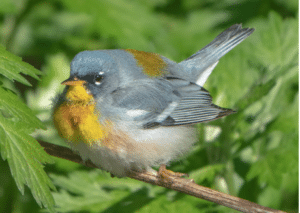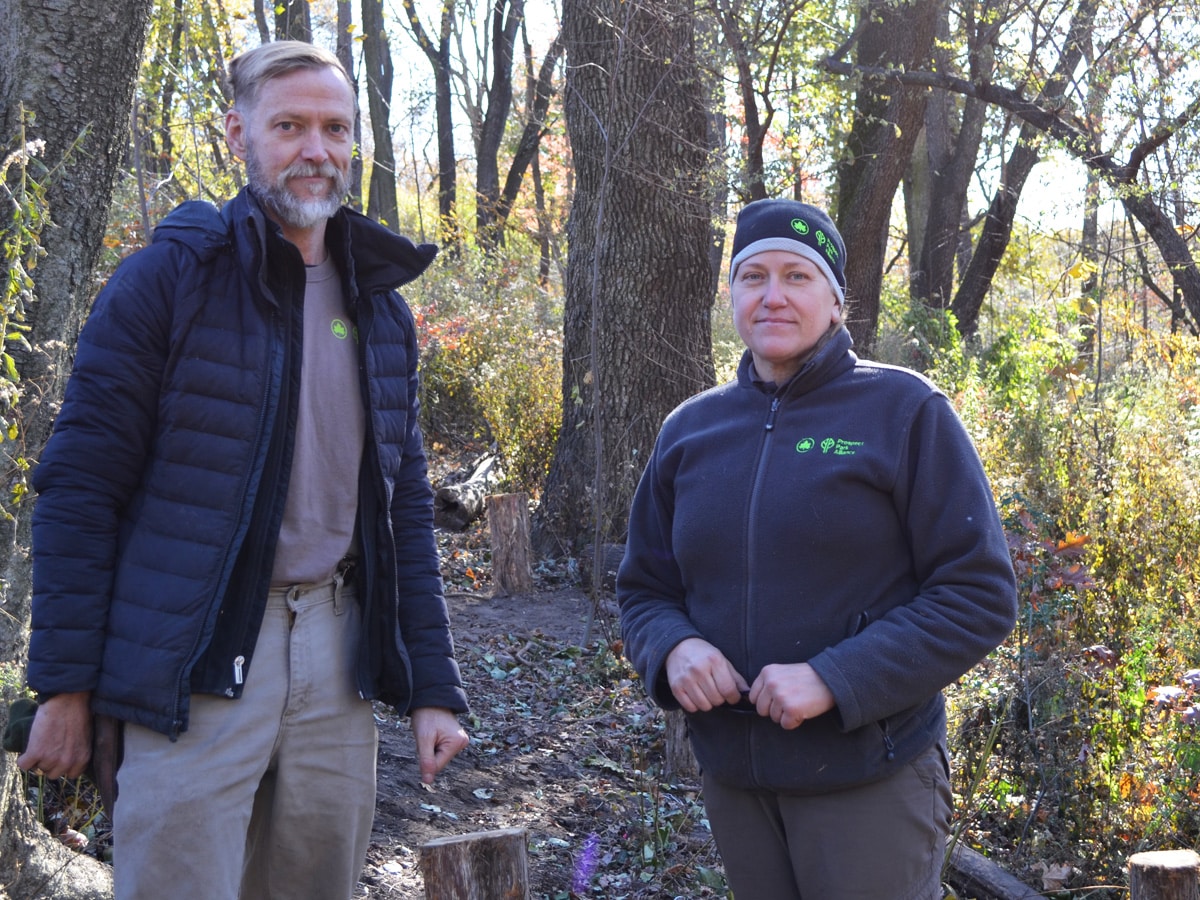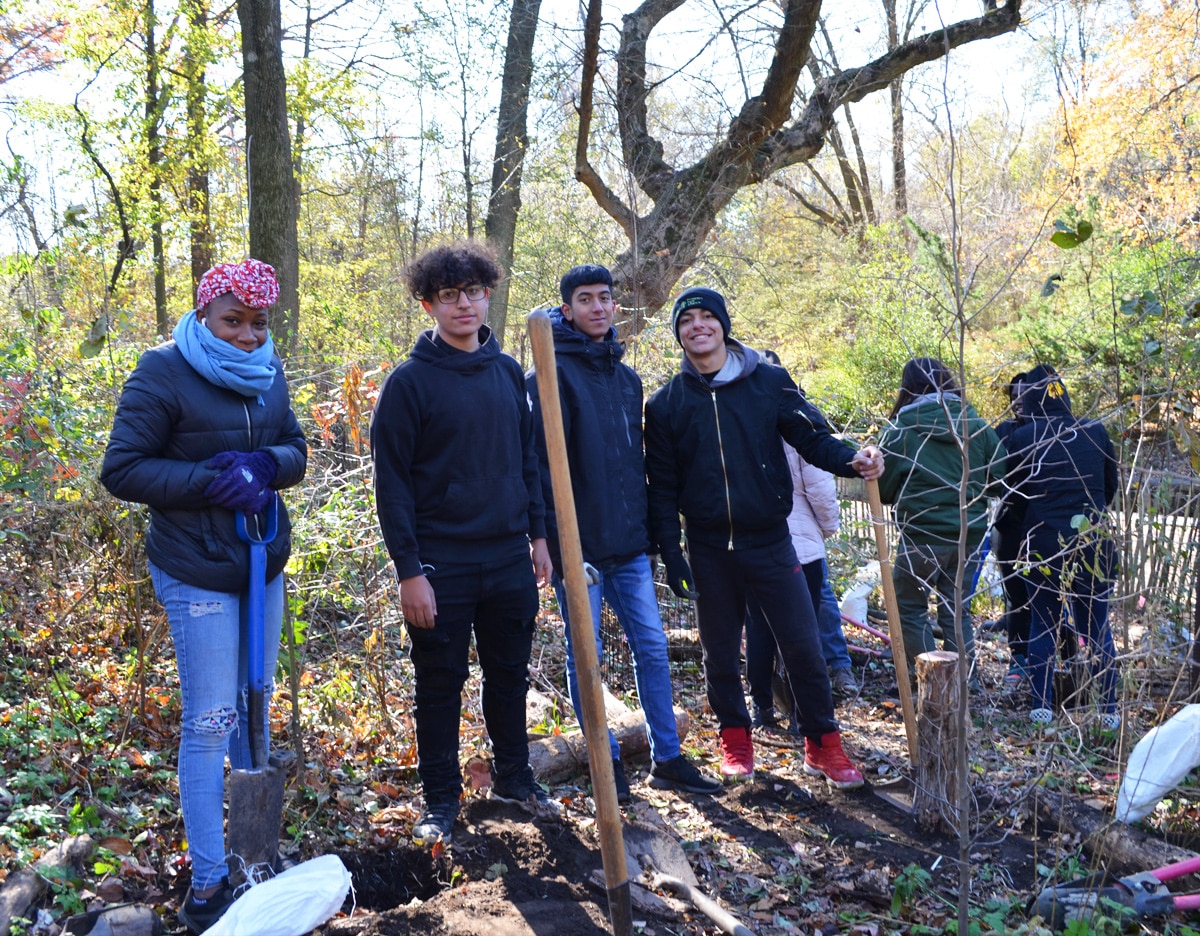8 Ways to Welcome Spring
April 8, 2025
Prospect Park is where Spring comes to life! With the change in season right at our front door, check out 8 activities to welcome the season and explore Prospect Park’s cherished destinations for seasonal fun throughout our 585 acres of meadows, woodlands and waterways. Plus, don’t miss the jam-packed activities open for you and your little ones this spring break!
1. Spend Spring Break in Brooklyn’s Backyard
Make the most of Spring Break in Prospect Park with family-friendly fun! This school break from Monday, April 14–Friday, April 17, visit the Prospect Park Audubon Center from 12–4 pm to get hands-on with seed and planting activities, experience an animal encounter and learn about the park’s trees and plants as well as the wildlife that call the park home. Plus, from 12–5 pm, take a spin on the park’s beloved Prospect Park Carousel.
2. Lend a Hand at a Spring Volunteer Event
Explore your park while giving back to the park you love all season long. Join Prospect Park Alliance for Park Pitch-In events on select Saturdays and Sundays to tackle a range of projects from tree care to removing invasive plants and weeds, picking up trash and much more. Check out the Sunset Series on Tuesday evenings from April – August to help with invasive plant removal, litter pickup and mulching to help Brooklyn’s Backyard thrive this season.
3. Go Birdwatching + Experience Spring Migration
Springtime is a peak season to admire the many vibrant feathered friends that pass through Brooklyn’s Backyard during Spring Migration. Prospect Park is located along the Atlantic Flyway, making it ideal for spotting migrating songbirds and more in spring. Make the most of the season with bloom-filled trees to compliment the vibrant species that frequent the park. Learn more about the 250+ bird species that can be spotted in Prospect Park, and join an upcoming Saturday morning Introduction to Birdwatching Walk or First Sunday Outing with the Brooklyn Bird Club.
4. Enjoy Family-Friendly Nature Programs + Pop-Up Audubon Events
Don’t miss family fun at the Audubon Center! Visit the Boathouse for nature programs on Thursdays–Sundays and holidays to get to know the plants and animals that call Brooklyn’s Backyard home through seasonal spring discovery stations, family bird walks and more.
5. Take a Spin on the Historic Carousel
Celebrate the start of spring at opening day of the beloved 1912 Carousel, one of the most popular attractions in Prospect Park. Kick off the season on Friday, March 28, with your little ones to enjoy rides on Thursdays–Sundays and school holidays from 12–5 pm. Plus, the Carousel offers packages for birthday parties for you to plan a celebration your little one will never forget.
6. Enjoy a Spring Bloom Walk
There’s nothing like a walk among spring blossoms in your park. Check out peak destinations to make the most of this season throughout the park. Plus, want to explore the park with a group on a guided route? Don’t miss weekly Wellness Walks on Fridays from 10 am–12 pm to boost your health and wellness on a scenic stroll, and weekly Stroller Walks for parents and caregivers with little ones to explore on Thursdays from 10 am–12 pm.
7. Spring Break Holiday Program
Make the most of Spring Break! Register for the Prospect Park Tennis Center’s Spring Break Holiday Program for intensive group instruction for both adults and youth of all levels of experience from April 14 – April 18 from 1–4 pm. Our accomplished staff of tennis professionals gives players personal attention while they acquire game fundamentals and increase their skill level
8. Honor a Loved One This Arbor Day
Commemorate a loved one and plant community trees at Prospect Park Alliance’s annual Arbor Day planting event on Friday, April 25. The Alliance’s arborist chooses the species and location of the trees, and all donors and their honorees are invited to participate in the tree planting on the morning of Arbor Day. By joining, you will not only help raise critical funds towards our mission to sustain, restore, and advance Prospect Park, but you will also participate in an ideal way to honor and celebrate your loved ones in a communal setting.





